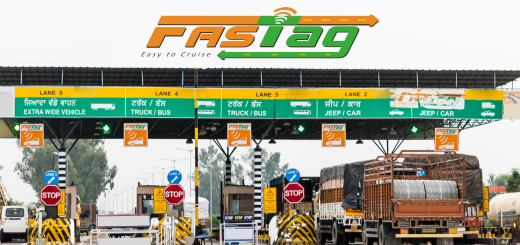Building a Sustainable Future: Connecting Transport and Energy for Mobility
Transportation and energy are deeply intertwined sectors, each playing a critical role in modern society. Unfortunately, traditional transportation systems largely dependent on fossil fuels contribute significantly to global greenhouse gas emissions, hindering efforts to mitigate climate change. Thus, bridging the gap between transport and energy is paramount to achieving sustainable mobility. This article explores various strategies for fostering a greener, more eco-friendly future for all.
Strategies for Connecting Transport and Energy for Mobility
Integrating Renewable Energies
Decarbonizing the transport sector begins with integrating renewable energy sources. Solar, wind, hydroelectric, geothermal, and bioenergy can gradually replace fossil fuels in powering electric vehicles (EVs), buses, trains, and ships. To support this shift, governments and industries must invest in infrastructure, such as charging stations and grid expansion. Simultaneously, research and innovation in battery technology will optimize the use of renewable energy in transportation.
Promoting Electric Vehicles
Encouraging EV adoption is crucial for reducing greenhouse gas emissions and dependency on oil. Governments can introduce incentives like tax rebates, free parking, and exemptions from tolls or congestion charges. Industries should expand EV manufacturing, broaden model ranges, and improve battery performance. Standardizing charging infrastructure, establishing interoperability protocols, and building a dense network of rapid chargers would make EVs more appealing and convenient.
Developing Hydrogen Infrastructure
Hydrogen-powered fuel cell electric vehicles (FCEVs) represent another zero-emission solution. Hydrogen can be extracted from various sources, including renewable energy, producing minimal carbon emissions. Building hydrogen refueling stations alongside EV charging points creates a comprehensive network of low-carbon transportation options. Countries like Japan, South Korea, Germany, and California are already investing in hydrogen infrastructure, setting examples for others to follow.
Optimizing Public Transport Systems
Reducing private vehicle usage is essential for sustainable mobility. In this context, well-designed public transportation systems powered by renewable energy can help achieve this goal. For instance, Bus Rapid Transit (BRT) systems, trams, light rail, and metros can be rolled out in densely populated urban centers. Furthermore, coordinating public transport schedules with school, work, and recreation timings increases ridership and decreases congestion. Ultimately, these strategies contribute significantly to a more sustainable transportation system.
Also Read:- Guide to Effective Road Transportation Risk Management
Active and Micro Modes of Transport
Walking, cycling, scootering, rollerblading, and skateboarding are active modes of transport that promote physical fitness and mental well-being. Municipalities should invest in infrastructure that separates bicycle lanes from motorized traffic, widens sidewalks, adds greenery, and creates inviting spaces for people to walk or cycle safely. Micromobility solutions, such as kick scooters can supplement walking and cycling. It will also provide flexible, affordable, and low-carbon transportation options.
Autonomous and Connected Vehicles
Autonomous vehicles (AVs) and connected cars can dramatically change the transportation landscape. However, AVs can optimize fuel consumption and reduce traffic congestion by intelligently controlling speed, distance, and lane positioning. Also, connected cars can exchange real-time data, warning drivers and suggesting optimal routes. Combining autonomous and connected functionality results in highly efficient transport systems, minimizing energy wastage and maximizing safety.
Demand Management Strategies
Intelligent demand management strategies can optimize transport systems and reduce energy consumption. Congestion pricing, surge pricing, variable road taxes, and differential parking fees can distribute traffic flow more uniformly, encouraging off-peak travel and limiting downtown congestion. Urban planning policies that restrict sprawl, limit car ownership, and concentrate residential, commercial, and recreational zones near transit hubs can further reduce trip lengths and overall transport energy use.
Shared Mobility Solutions
Car-sharing, ride-sharing, bike-sharing, and scooter-sharing platforms enable commuters to access transport services on demand rather than owning vehicles outright. As a result, pooling resources together reduces the number of cars on roads, eases traffic, and cuts back on energy consumption. Additionally, digital apps and platforms can match riders, bikers, or drivers heading in the same direction, maximizing occupancy rates and minimizing empty runs.
Green Freight Initiatives
Heavy-duty trucks and freight movements contribute significantly to transport-related emissions. Therefore, green freight initiatives targeting logistics operators, shipping companies, and truck manufacturers can drive down emissions through aerodynamic improvements, idle reduction technologies, alternative fuels, and electrification. Furthermore, cooperative agreements between countries, industries, and NGOs can harmonize standards and regulations, spreading best practices and promoting global decarbonization efforts. In addition, these collaborative efforts can enhance the overall effectiveness of emission reduction strategies. Ultimately, the integration of these initiatives is crucial for achieving a sustainable transportation future.
Policy Frameworks and International Cooperation
A global consensus is imperative to tackle transport emissions effectively. National governments must craft supportive policy frameworks aligned with Paris Agreement targets and UN Sustainable Development Goals. Bilateral and multilateral agreements between nations can coordinate efforts, leverage comparative advantages, and allocate funding fairly.
Monitoring and Reporting Progress
Tracking progress transparently and objectively is crucial to evaluating sustainable mobility strategies’ effectiveness. Indicator sets developed by international agencies, such as the United Nations Environment Programme (UNEP) or the International Council on Clean Transportation (ICCT), measure advances against established baselines. Harmonizing indicator definitions and calculation methods enables meaningful comparisons and drives competition between jurisdictions.+
Conclusion
In conclusion, bridging the chasm between transport and energy is essential for realizing sustainable mobility. Moreover, integrating renewable energies, promoting electric and hydrogen-powered vehicles, optimizing public transport systems, and fostering shared mobility solutions are fundamental steps toward a low-carbon, resource-efficient, and inclusive future.
Additionally, demand management strategies, intelligent transport systems, and green freight initiatives further reinforce efforts to decouple transport from fossil fuel dependency. Consequently, crafting supportive policy frameworks, fostering international cooperation, and monitoring progress diligently will help translate ambitions into reality, bringing the world closer to a sustainable transportation vision. Ultimately, these integrated approaches will ensure a more sustainable future for all.




Recent Comments